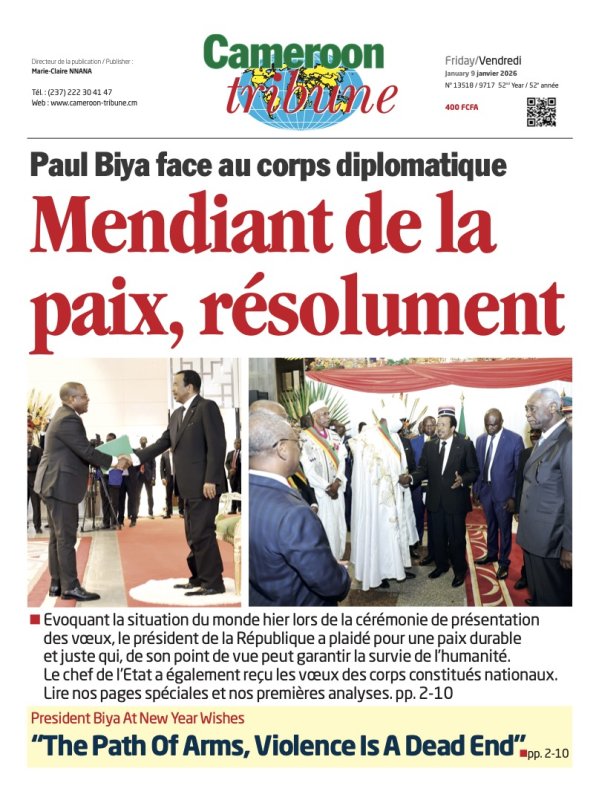Rethinking Urban Development Planning!
- Par Godlove BAINKONG
- 19 Oct 2023 08:23
- 0 Likes
A recent announcement that government has secured FCFA 46.2 billion to carry out some vehicle movement-enhancing works in Yaounde certainly rekindled hopes in the population, even as the sustainability of what is envisaged for the capital city raises more questions than answers. The euphoria is borne out of the suffering of the denizens who, on daily basis, endure all sorts of difficulties moving from one end of the city to the other. For, huge traffic on narrow and poor roads is a daily reality in most of the country’s cities, worse of all in the economic and political capitals where population density is high and grows by the day.
Attention is now focused on the Debt Reduction and Development Contract (C2D) programme said to be tailored towards reducing traffic congestion in Yaounde by redesigning junctions and building bus stations. Fingers are thus crossed hoping the ‘C2D-Yaoundé Cœur de ville programme,’ due to be launched in 2024, comes with the magic wand to solve the vexing driving difficulties that inflict huge socio-economic pain on the inhabitants.
Going by officials of the Yaounde City Council in whose hands the programme lies, a 10-year sustainable urban mobility plan has been adopted based on the development of the road network, creating bus lanes and reducing the cost of urban mobility borne by households. The aim is to improve the quality of life in the city, with less dangerous roads, fewer accidents and less pollution. In simply terms, the Yaoundé-Cœur de ville programme plans to redevelop three major junctions (Mvan, Elig-Edzoa, Elig-Effa) in addition to the Awae escalier, Emombo and Sous-manguiers junctions; and to build the Mvan and Messa (Mokolo) bus stations. Minibus and taxi terminals are also planned among others. The expected impact is to improve access to urban transport for 430,000 people by 2035, increase the area of pedestrian walkways by 19,000 m², and reduce circulation times, currently wasted in huge traffic. The programme is co-financed by the Cameroon government to the tune of FCFA 8.5 billion and the C2D fund at FCFA 46.2 billion. It is projected that more than 1,000 people, businesses, bus companies and service stations might be affected and about a billion francs used to compensate and resettle them.
The literature sounds somehow convincing, hoping that those who drafted the project took into consideration the sorry state of urban roads at moment and were visionary enough to know that the population today risks doubling when the programme is executed in ten years. The bitter reality in Yaounde is that there are no roads worthy of a capital city. The few paths paved in the yesteryears are in an advanced state of deterioration. Potholes all over! Most stretches have no alternative roads and so everyone is forced to line up with fuel and time consumed recklessly. Even worse is the fact that the already hard-pressed city dwellers do not have choices on which mode of transport to take since they only have rickety taxis and risky bikes to manage on the poor roads. To say the least, it really needs strong stamina to move from one end of the city to the other. Those who even manage to buy vehicles frequently lose their precious parts to the potholes. Running a car here is overly expensive.
It is no news in this contemporary world that the modernity of a city is measured by the quality and quantity of its infrastructure, most of which are transport. A city with poor route networks coupled with archaic transport systems where dwellers have no choice, must sit up. Inasmuch as traffic jams are almost commonplace in most metropolis anywhere in the world, dwellers are at least offered diversity of movement means. In effect, a modern city comprises various processes for public welfare like the designing of buildings, transportation network systems and good amenities. An evolving city cannot do without revolutionary public transport systems like bus, subway, light rail, taxi, ferry…With these, commuters have a wide-range of options from which choices are made depending among others on their destinations. But when city dwellers have only taxis and bikes on poor roads, suffering becomes inevitable. Sadly, this is the ordeal city dwellers go through in the country.
It therefore becomes imperative to revisit the urban development strategy here with a particular look on transportation. The announced C2D-Yaoundé Cœur de ville programme must absolutely be seen, taken and piloted as a means to an end and not the end in itself. The objectives of the programme; if at all attained on time and satisfactorily too, can at best serve as a short and may be medium-term therapy to a vexing problem of urbanization that requires well-thought out, carefully planned and sustainable solutions. The...
Cet article complet est réservé aux abonnés
Déjà abonné ? Identifiez-vous >
Accédez en illimité à Cameroon Tribune Digital à partir de 26250 FCFA
Je M'abonne1 minute suffit pour vous abonner à Cameroon Tribune Digital !
- Votre numéro spécial cameroon-tribune en version numérique
- Des encarts
- Des appels d'offres exclusives
- D'avant-première (accès 24h avant la publication)
- Des éditions consultables sur tous supports (smartphone, tablettes, PC)











Commentaires